Quarter Castle Publishing is accepting submission for completed, tradition fantasy manuscripts from residents of Nova Scotia. Length: 75,000-120,000 words. Deadline: Ongoing.
Add a Comment
Quarter Castle Publishing is accepting submission for completed, tradition fantasy manuscripts from residents of Nova Scotia. Length: 75,000-120,000 words. Deadline: Ongoing.
Add a Comment
Unsolicited Press (US) is looking for poetry collections, poetry chapbooks, essay collections, memoirs, short story collections, lengthy journalism, and novels and novellas (popular fiction, literary fiction, and experimental fiction). Deadline: January 15, 2016.
Add a Comment
London. Michaelmas term lately over, and the Lord Chancellor sitting in Lincoln's Inn Hall. Implacable November weather. As much mud in the streets as if the waters had but newly retired from the face of the earth, and it would not be wonderful to meet a Megalosaurus, forty feet long or so, waddling like an elephantine lizard up Holborn Hill.
The post Fog everywhere: an extract from Charles Dickens’ Bleak House appeared first on OUPblog.
Tailwinds Press, a young New York City-based independent press specializing in literary fiction by new and emerging writers, seeks submissions for 2016. Publishes “intelligent work that is compelling, accessible, and relevant to the spirit of our time.” Manuscript length: 40,000 words or more. Deadline: Rolling. Guidelines.
Add a Comment
Entries are invited for the Writer Advice’s Fourth Scintillating Starts Contest. Three prizes of $100. Submit opening paragraphs, up to 1500 words, of an unpublished memoir or novel (or other prose genre). Open to works in progress as well as finished manuscripts. Entry fee: $20. Deadline: November 10, 2015. Guidelines.
Add a Comment
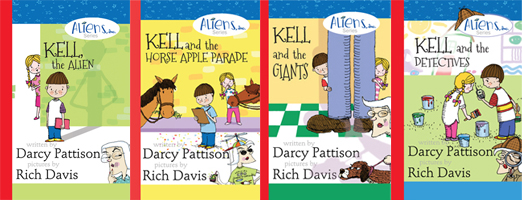
What agents are selling middle grade novels? Publishersmarketplace.com does a great job of monitoring the business of selling manuscripts to publishers. If you’re looking for an agent, you’ll want to spend a lot of time there doing research on agents to find the perfect match for you and your stories. Here’s just one way to look at the agents for middle grade novels. This list includes information on the agent, links to his/her agency and the number of middle grade deals made in the last twelve months. Please note that the agent/agency may have made many other deals in addition to these; these are limited to those self-reported by the agent/agency in the category of middle grade. For more information, go to Publishersmarketplace.com (you must pay to join to see full information).
This is the second of three articles on current agents for children’s books. See also Picture Book Agents and YA Agents lists (link is live on 4/29).
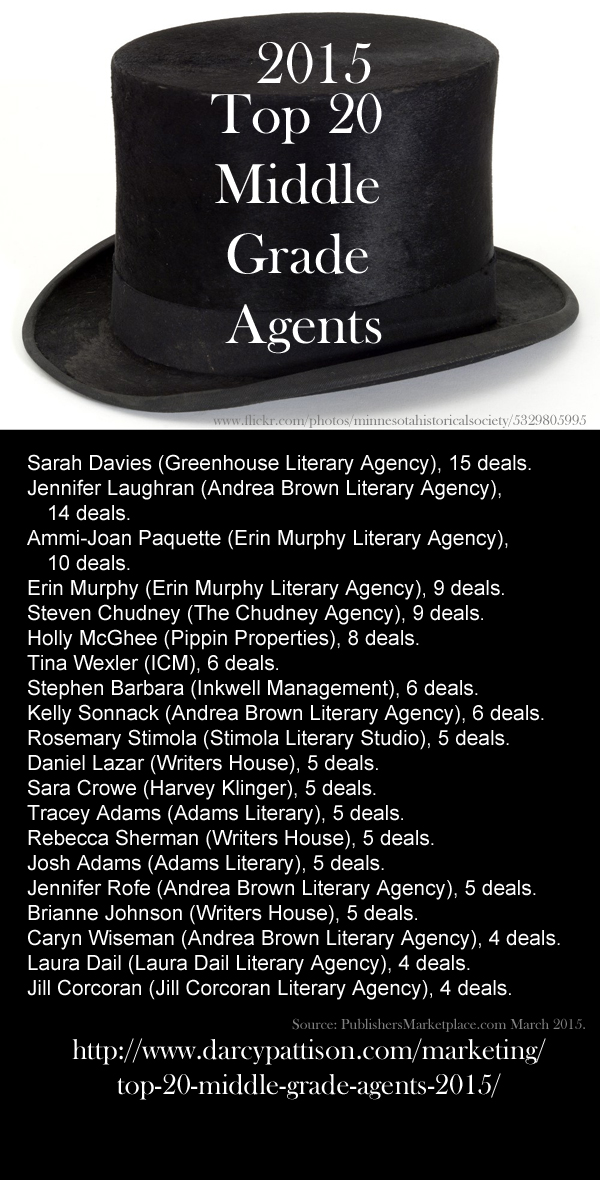
I did this roundup of middle grade agents in 2013 and you may want to compare the list from then. At that time, I only listed the top 10 agents, who represented 60 sales. This time, the top 10 middle grade agents report 80 sales. There may be two reasons for this. First, Publisher’s Marketplace relies on agents to self-report. This means that the agents are, for the first time, in a sort of competition for rankings. Reporting more sales means they are ranked higher, which gives prestige and possibly brings in more prospective clients. Second, it could mean that sales are up for middle grade novels. We hope the latter is the case, but suspect the first reason has much to do with the increased number of sales.
I’m so excited to tell you that the audiobook of WISH YOU WEREN’T is live! I didn’t realize after approving the final version that it would take Audible nearly two weeks to listen to it to make sure the quality was up to par, but I’m glad they did. Because that ensures that anyone who […]![]()
You’re a human being: you can stand up, sit down, or do a somersault. That’s because you have a skeleton that gives your soft tissue a structure.
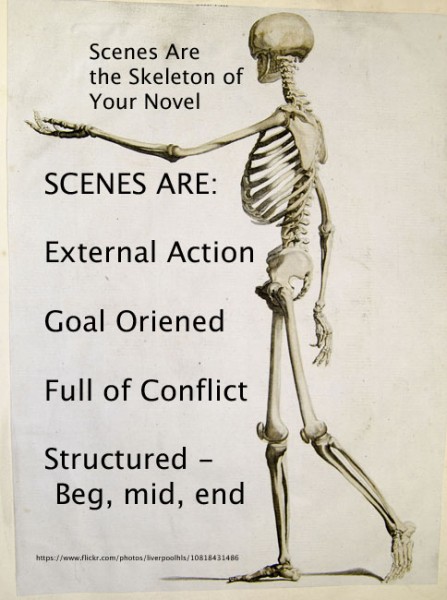
Likewise, it’s important to give your novel a structure that will hold all the soft murmurings about characters, places and events. It begins with understanding the structure of a scene. First, let’s answer the question: do you have to write in scenes? No. There’s a continuum from those who write strictly in scenes to those who don’t. However, for beginning to intermediate writers, you’ll see more improvement in your writing if you move closer to the strictly writing in scenes end of that continuum. Early in a career, writers need discipline to add structure that may come more easily with experience.
External Action. A scene is a unit or section of a story that hangs together because of the action or event. Scenes are not internal, but external. Something must physically happen.
Something Changes. Something important must happen in a scene; after the scene is over, the situation must be different for the character’s lives. The definition of “important” and “different,” of course, will change with the genre, but still, we recognize that something important has created a difference.
Goal Oriented. The strongest scenes begin with a character wanting something and encountering difficulties in achieving his/her goal. The goal can change or develop over the course of a story, but it must be there.
Conflict. If your character wants something (Goal), and they have instant gratification (Result), that’s not a scene. Every Goal must meet with obstacles that prevent the character from achieving the goal. This is the basic promise of all fiction, that life will encounter problems that won’t be solved till the last page.
Beyond these requirement, strong scenes add a deeper structure. It’s not required, for those who only write loosely in scenes, but it helps.
Scenes can be divided into three or four sections: beginning, middle, turning point or pivot, ending.
Beginning: This sets up the situation, setting, characters and the goal.
Middle: Conflict piles on conflict as the goal gets farther and farther away.
Turning point/Pivot: Something happens to spin the story in a different direction. Scenes without a pivot are possible, but scenes WITH a pivot are more interesting.
Ending: What has changed?
A good way to see the structure of a scene is to watch the “Bar Scene” from the movie, Good Will Hunting. If you can’t see this video, click here.
Beginning: Will and his friends enter the bar, choose a table, order a beer.
Goal: These “Southies” want to experience a Harvard Bar and maybe pick up a girl.
Middle: Chuckie goes over to check out a girl. But a Harvard man steps in to put him down.
Pivot point: Will takes over the conversation with his superior intellect.
Ending: Will meets the love interest. The conversation with the Harvard man is a win/lose: Will wins because he manages to make his point that a college education isn’t everything; however, listen carefully to the deeper conversation about class distinctions and you’ll see that Will still faces challenges.
For more on scenes, I always recommend Sandra Scofield’s excellent book, The Scene Primer. Or see my series, 30 Days to a Stronger Series.
Openings are incredibly important. This was brought back to me recently as I was judging a contest. Those manuscripts that kept my interest for three pages were rare. Usually, they lost me by the middle of page two!
Am I harsh? I don’t think so.
Noah Lukeman has it right in his book, The First Five Pages: A Writer’s Guide to Staying Out of the Rejection Pile. This is a book I ask those attending my Novel Revision retreats to read before they attend. Lukeman’s premise is that an editor will decide if they want your book or not based on the first five pages of your manuscript. After judging this contest, I agree. Sometimes, you can even make a judgment based on the first paragraph.
That first paragraph? You want to grab the reader by the throat and never let go!
There were some first-person stories where I didn’t even realize it because the story caught me. When it works, it work well. When it fails, the story might could be salvaged by a switch to third. Consider: Is there a compelling reason for the first-person point-of-view? Could this ONLY be told from first? Try–OK, just try–writing the first chapter from third and give it to an independent, unbiased reader (like you can find that!) and ask which version they like better (don’t tell them what the difference is). I bet that third will win in the majority of cases.

Two Cups of Tea by peppermint quartz on DeviantArt, Creative Commons Attribution 3.0 License, http://fav.me/d4ahdt1
Happy New Year!
Happy … and yet.
Everywhere you look, it’s all about pushing ourselves, isn’t it? First came November’s NaNoWriMo, with all the tips for writing more, more, more, writing faster, faster, faster. Then came the holidays, with 12 days left to shop/plan/wrap/bake/revise that manuscript from last month, 11, 10, 9 … And now it’s on to who can make the biggest commitment to his or her writing in the coming year.
I should start by saying that I am a huge believer in having a writing discipline. When I’m in the midst of a writing project, I feel I have to work on it most days—often at odd hours, and for longer than I’d intended (much to the frustration of the non-writers around me)—to keep the momentum going.
And yet, it’s not always human to expect ourselves to maintain that intensity and speed and productivity indefinitely. So with all that said, I’ll also say this:
If it starts to become a drag, you’re doing it wrong.
For a long time, I’ve been wanting to start a series of blog posts here celebrating the best-in-class writing advice that we at Writer’s Digest have collected over the years. I’ve had the privilege of discussing the craft of writing with so many authors who I deeply admire for our WD Interview cover stories. You’d think all those conversations might run together in my mind after a while, but in fact the opposite happens: The best advice rises to the top.
I’d like to kick off 2015—and this Best in Class writing advice series—by spotlighting wise words from two famed writers who offer unique twists on the age-old writer’s advice that we must Write Every Day. Both of these interviews were “click” moments for my own writing discipline, and they just might be for yours, too.
“… Part of writing is not so much that you’re going to actually write something every day, but what you should have, or need to have, is the possibility, which means the space and the time set aside—as if you were going to have someone come to tea. If you are expecting someone to come to tea but you’re not going to be there, they may not come, and if I were them, I wouldn’t come. So, it’s about receptivity and being home when your guest is expected, or even when you hope that they will come.”
“Treat your writing like a relationship and not a job. Because if it’s a relationship, even if you only have one hour in a day, you might just sit down and open up your last chapter because it’s like visiting your friend. What do you do when you miss somebody? You pick up the phone. You keep that connection established. If you do that with your writing, then you tend to stay in that moment, and you don’t forget what you’re doing. Usually the last thing I do before I go to bed is sit at my computer and just take a look at the last thing I was writing. It’s almost like I tuck my characters in at night. I may not do much, but I’m reminding myself: This is the world I’m living in right now, and I’ll go to sleep and I’ll see you in the morning.”
What they’re both saying, and what I myself believe to be true, is this: You don’t always have to force yourself to write every day, but you do need to make the time and space to spend with your writing as regularly as you can. If you do, it will come when it’s ready.
To my mind, that’s a lot less intimidating than writing every day. It’s a lot more zen, organic, intuitive, enjoyable—and effective, too.
One of my favorite articles in our January 2015 Writer’s Digest—a comprehensive novel writing guide boldly proclaiming on its cover that “This Is the Year You Write That Novel!”—is an in-depth look from therapist-turned-writer Tracey Barnes Priestley on the real reasons so many writers give up on their writing resolutions, and how we can get out of our own ways and make real progress in the weeks and months ahead. That article, “Why So Many Writers Give Up Mid-Novel—and How Not to Be One of Them,” and the January issue as a whole, is a warm, encouraging companion for the writing year ahead. It’s on newsstands for only one more week, so I encourage you to get your copy while you can! Of course, it will also remain available for instant download in The Writer’s Digest Shop.
What’s your philosophy on your writing routine in this new year? What’s your own preferred approach to writing (or making room for writing) every day? Let’s continue the discussion in the comments thread below!
Wishing you and your writing a great year ahead.
Jessica Strawser
Editor, Writer’s Digest Magazine
Follow me on Twitter @jessicastrawser.
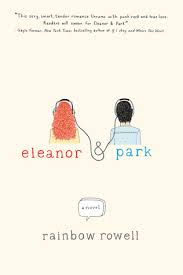 I am currently reading Eleanor and Park, a YA romance; one of the interesting things about this story is the author’s choice to create a sensual tone. It’s not sexy or intellectual. The choice of tone is interesting because often a romance can devolve into physical stuff of sex.
I am currently reading Eleanor and Park, a YA romance; one of the interesting things about this story is the author’s choice to create a sensual tone. It’s not sexy or intellectual. The choice of tone is interesting because often a romance can devolve into physical stuff of sex.
Instead, Rowell walks a fine line between the two extremes. It’s sensual because there are physical details. For example, Eleanor notices Park’s hands:
Park’s hands were perfectly still in his lap. And perfectly perfect. Honey colored with clean, pink fingernails. Everything about him was strong and slender. Every time he moved, he had a reason.
Or Park, describing holding Eleanor’s hand:
Holding Eleanor’s hand was like holding a butterfly. Or a heartbeat. Like holding something complete, and completely alive.
The question is, of course, what tone do I want for my story?
That’s what a writer does as they read great stories from other writers: you think about what they are doing that is working so well, and how to translate that into your own stories.
Do I want a romance that is intellectual, sensual, sexy, titillating, mysterious, or something else? How do I achieve that?
First, I pay attention to the tone of my drafts. While I’m writing, I work hard to characterize, to plot, to evoke a setting. But I’m also paying attention to the word selection and how that affects tone. Sentence structure can affect tone, as can the rhythm patterns created by a combination of words and sentences.
First drafts are about approximating: you want to get close to the target of a great story. As I revise, I am refining so many things, but one of those is the right tone.
It may also mean that I do a couple trial drafts. How does a sexy tone fit with the rest of the story? How does an intellectual romance mesh with the action plot? Experimenting with different tones is sometimes essential. I know that my story should have a lot of action, and I’m comfortable with the tone I’ve created for that part of the story. But integrating that with the romance subplot is trickier this time. The goal is an integrated story, a whole story.
Writers have only a few tools: words, sentences, paragraphs. That’s it.
Words. Think about the connotations of each word/phrase you choose.
Sentences. While short sentences can speed up an action, long sentences can languish and slow down a story.
Paragraphs. And overarching is how the words, sentences, meaning, and connotations blend to create the right rhythms.
Most of all, don’t leave tone to chance. Decide what tone works for your story, and then work to make it happen.
When: Starting today and running daily through Friday, Dec. 5th
 Light-bulb moments. Aha moments. Flashes of recognition. Revelations. Call them whatever you like. I like to think of them as clicks.
Light-bulb moments. Aha moments. Flashes of recognition. Revelations. Call them whatever you like. I like to think of them as clicks.
In the writing life, the best kind of click is that moment something makes you realize exactly what’s been missing from the not-quite-right scene you’ve been working on. Or the instant you put two plot points together and suddenly have a clear view of what’s really beneath your character’s behavior. Or the random tip on plot structure that magically conjures for you a map of how everything in your messy draft might fit together after all.
Clicks. They’re satisfying, exciting, inspiring, invigorating. And they’re the stuff writers live for.
The January 2015 Writer’s Digest—devoted to all things novel writing—releases today, and I’m so excited to finally be able to offer you a preview of what’s inside. We’ve done our best to fill this issue with the types of craft advice and writing techniques that help things click into place. Because whether your own moments of realization are quiet head nods or loud exclamations of triumph, as subtle as the click of a key in a lock or dramatic as a stack of papers launched into the air, we know it’s the bits of advice that resonate that can make all the difference for your novel-in-progress.
First, award-winning novelist David Corbett shares what made his own characters finally click on the page—and how you can paint more effective pictures of the players in your own stories, too. Then, longtime contributor Elizabeth Sims details techniques for mastering one of the most notoriously difficult elements of fiction: dialogue. Bestselling novelist Steven James shows you precisely how to manage the flow of tension and conflict in your story—through multiple plot points, climaxes, subplots and more. Therapist-turned-writer Tracey Barnes Priestley delves into the real reasons “Why So Many Writers Give Up Mid-Novel—and How Not to Be One of Them.” And four bestselling series writers take you behind the scenes with their iconic characters to show you what it is that gives a novel that special something that makes readers want another installment, and another, and another.
We all know that writing a novel isn’t easy. But in those moments that something clicks, suddenly anything seems possible. Here’s to many ahas on the pages—and in the new year—ahead.
Get your copy of our “This Is the Year You Write That Novel!” issue on your favorite newsstand starting today, or download the January 2015 Writer’s Digest and start reading right now.
Happy Writing,
Jessica Strawser
Editor, Writer’s Digest Magazine
Follow me on Twitter @jessicastrawser.

Photo by Jason Dunn, courtesy of a Creative Commons 2.5 License (http://photos.jasondunn.com/Logan/Logans-First-Halloween/10187418_RKHXSx#!i=701471756&k=ZMKnkbp)
This is the first year my 3-year-old has really gotten Halloween, so we’ve spent October seeking out any excuse for him to wear his costume and spend the day yelling “Boo!” As a result, at an array of fall festivals, we’ve collected a countertop full of pumpkins of assorted shapes and sizes; a small glow-in-the-dark bucket of unhealthy snacks; and, for the writer in the household (that would be me), one great reminder about developing characters.
The lesson came at a children’s Halloween parade at a local park. Costumed kids and their parents congregated by the gazebo waiting for the festivities to start. An announcement was made that the kids were to march behind a giant basketball character named “Hoopster” (how or why Hoopster became the recipient of this honor remains unclear) into the center of town, where storefronts were offering trick or treating.
We were surrounded by princesses and Power Rangers, scarecrows and jungle animals. Many of the costumes were homemade, some looking a little haggard or missing accessories, but the kids wearing them were playing their parts. The ballerinas twirled and curtseyed. The transformers stomped and zoomed. The superheroes posed, karate chopped and kicked. My little guy beamed at all of them, his fire chief’s hat on his head and bullhorn in his hand, ready to come to the rescue at the first sign of smoke or a cat stuck in a tree.
And then, at last, the moment we’d been waiting for: Hoopster appeared.
The parade couldn’t start yet, though. The ball portion of his costume was still deflated, and he stood off to the side fiddling with the thing while the kids milled around restlessly. Hoopster couldn’t get his inflating tool to work, and began tapping parents on their shoulders asking if anyone had a coin to help get the thing going. Apparently Hoopster had not done a practice run before game time.
Finally, the giant basketball took its place at the front of the pack, and the children fell into line, excited for the parade. Then, my son looked up at me, frowning for the first time all day. He seemed skeptical.
“Basketballs don’t have legs,” he said.
“True,” I said slowly, looking around. What else was there to say? It hadn’t bothered him that transformers don’t wear sneakers or lions don’t carry blankies or scarecrows don’t lick lollypops. So what had changed?
 The best instruction from Writer’s Digest on character development
The best instruction from Writer’s Digest on character development
is now available in a single book! Preview, order or download
Creating Characters: The Complete Guide to Populating Your Fiction now.
Hoopster wasn’t really selling his costume, was he? He’d spent a pretty penny on an outfit that was actually a lot more over-the-top than anyone else’s. He’d probably felt like that was enough. But it wasn’t.
The problem wasn’t so much that Hoopster was having issues—most costumes have issues at some point, right? If he’d made a wisecrack about being left in the garage too long or even half-heartedly called out, “Oh no, how will I bounce now?” he probably could have saved face. But by letting the kids see that he was just a guy who couldn’t figure out how to direct the airflow into a big nylon sphere, he was inhibiting their ability to suspend their disbelief. His legs didn’t kill the authenticity; his lack of commitment to his character did.
What does this teach us about how to develop character? Well, a lot. Your character needs to be comfortable in his outfit from the very first scene. He needs to know how it fits, how it works, and who it makes him look like to everyone around him. And in order for him to pull that off, we as our characters’ creators need to know who they are, inside and out, from Page 1. We can’t let our own voices show through where we’re supposed to be writing as our characters. We need to commit to them, fully. We need them to commit to the story, fully. And only then can our readers commit fully, too.
Whether you’re writing a first draft or revising a complete story, as you work through scene by scene, make sure that your superhero has her mask tied tightly into place. Chapter 1 can’t show her off-kilter to the point that she hasn’t yet figured out that trick to keeping her cape from coming untied. And Chapter 10 can’t catch your cowboy without his hat or spurs because he got tired of messing with them and tossed them aside somewhere along the way.
You don’t want to let readers arrive for the parade to find that you haven’t yet fully inflated your lead characters. Make your characters sell the reality behind those costumes, however flawed they may be. If your characters truly believe that they are princesses, and behave as such, then your readers will be a lot less likely to notice—or care—that they’re wearing the wrong shoes or have lost the rhinestones out of their tiaras.
Happy Halloween!
Jessica Strawser
Editor, Writer’s Digest Magazine
Follow me on Twitter: @jessicastrawser

Image by Beliroz, deviantART, courtesy of a Creative Commons License: http://beliroz.deviantart.com/art/Keyboard-in-the-night-183881657
While I’ll be cheering on NaNoWriMo participants from the sidelines this year rather than joining the race, I am forever looking for ways to expand my own daily word count—not just in November, but all 12 months of the year. My goals may be more modest (while they fluctuate depending on my work-in-progress and what stage it’s in, I currently aim for an average of 1,000 words a day, six days a week), but with a full-time job and a family, they’re not easy to meet.
When people find out I’ve got a novel in progress, they inevitably stop to take in my energetic 3-year-old boy, already-almost-walking 9-month-old girl, and full-time job overseeing Writer’s Digest magazine and say the same thing: Wow, you have your hands full.
I do. Literally. If I’m not in the office, you can often find me with a giggling, hair-pulling baby in my arms, a pot on the stove (or, um, the pizza guy on the phone), and a little boy dressed as a superhero tugging on my pant leg.
So for me, pushing my daily word count is about finding ways to write in between the times when I can actually sit uninterrupted at my laptop. Here are three methods that work for me—and may just work for you, too.
On TV commercials, people talk to their phones to find out where the nearest Chinese restaurant is or to remind themselves to buy flowers for their anniversary. I talk to my phone to record ideas for fictional scenes that pop into my head at random moments of the day. Snippets of dialogue, emotional descriptions and plot notes all get recorded to be sure they don’t evaporate before I can get to my keyboard.
On my drive home from work, I have about 15 minutes of quiet time alone in the car until I pull into the daycare. Sure, sometimes I listen to music, or NPR news. But especially if I don’t yet know what scene I’m going to tackle after the kids are in bed that night, I like to use this time to brainstorm. Hands-free, I’ll dictate what comes to me into my phone. I once “wrote” 650 words between quitting time at work and pickup time at daycare. Sure, there were lots of misunderstood words and typos to correct—no voice command app is perfect—but when I do get to the computer, cleaning up the copy is far easier than starting from scratch.
There are other times—say, if a baby is napping on my shoulder—that I can get my hands free but not balance a full-sized laptop on my lap. And we’ve all had those moments when we don’t have our computers in reach when inspiration strikes—but we do happen to have a tablet or smartphone with us, so we try to peck out the words on our touch screens as fast as we can, all the while grumbling that our fingers can’t catch up to our brains.
That’s where my Bluetooth keyboard comes in. I got one for my birthday back in August, and my husband is still pretty proud of himself for how much I rave about it. For only about $30, it came with a slim case and slips easily into my purse. No matter where you are, simply pair it with whatever device you have on hand, and voila! You can actually type out a scene or notes at full speed. When I have my Bluetooth keyboard along, I no longer mind if a friend is late to meet me for lunch, or if my dentist leaves me in the waiting room. In fact, sometimes I’m secretly glad.
It is one of the stranger side effects of the writing life that I email myself perhaps more than I send messages to anyone else. But every day, no matter how busy I am, whether I’m using one of the methods above or another, I try to at the very least send myself the briefest of notes regarding what my next scene will be.
At worst, when I sit down at my keyboard later, I’ll have some kind of starting point, rather than a blank screen (and a blank brain). At best, if I’ve gotten a little carried away with my note taking, my scene might already be half-written.
What I’ve found is this: Whether you’re a “pantser” or a plotter (or, in my case, a little of both), when you sit down to write with SOME kind of notes in front of you, you’ll spend less time getting in the groove and more time churning out words.
The November/December Writer’s Digest magazine is filled with Tips and Inspiration to Write a Book in a Month, including advice for developing a write-a-thon strategy and keeping the words coming. If you’re looking to increase your productivity or planning for NaNoWriMo, check out a preview in the Writer’s Digest Shop, download it instantly, or find it on a newsstand near you.
What about you? How do you increase your daily word count? From one hands-full writer to another, I invite you to leave your own tips in a comment below—we can all use all the help we can get!
Happy Writing,
Jessica Strawser
Editor, Writer’s Digest Magazine
Follow me on Twitter: @jessicastrawser
 One of the things I love about working at Writer’s Digest is the excitement each time a new issue hits newsstands. And it’s especially true with the November/December 2014 Writer’s Digest–because this special guide to Writing a Book in a Month arrives just in time for November’s National Novel Writing Month challenge. Regardless of whether you’re participating in NaNoWriMo, counting down 30 Days to Your Novel on your own schedule, or simply looking to write your next draft faster, this is an issue you won’t want to miss.
One of the things I love about working at Writer’s Digest is the excitement each time a new issue hits newsstands. And it’s especially true with the November/December 2014 Writer’s Digest–because this special guide to Writing a Book in a Month arrives just in time for November’s National Novel Writing Month challenge. Regardless of whether you’re participating in NaNoWriMo, counting down 30 Days to Your Novel on your own schedule, or simply looking to write your next draft faster, this is an issue you won’t want to miss.
As a parent of both a baby and a toddler, I am surrounded by constant reminders that a lot can happen in a month. Still, it never fails to astonish me. A reliance on wriggling as a means of transportation turns into a full-speed crawl on all fours. A tearful transition to a new preschool becomes an over-the-shoulder wave in a rush to join new friends around the train table. Skills grow or are replaced by new ones, routines change, habits are formed or dropped.
As I compiled the November/December 2014 Writer’s Digest, filled with stories of big triumphs over short periods of time, it occurred to me that as adults, we don’t lose that ability to transform ourselves or our work—but we do tend to forget that we have it. And what a shame that is. Know this: Deep down, we are capable of taking more than baby steps. If we set our minds to it, we can cross major milestones in leaps and bounds. And that goes for our writing, too.
Writing a book in a month might sound a little crazy. In a way, I think that’s part of its allure—because write-a-thon challenges are steadily gaining in popularity. Every November 1, National Novel Writing Month’s online hub at NaNoWriMo.org draws nearly half a million writers worldwide in an attempt to write 50,000 words in 30 days. As NaNoWriMo director Grant Faulkner shares in this issue’s article “What Makes NaNoWriMo Work,” that solidarity is a big part of what keeps the challenge growing every year. Because no matter how hard you have (or haven’t) trained to prepare for this marathon, once the starting pistol fires everyone is pretty much in the same pack, throwing caution to the wind and cheering one another in one big, messy sprint to the far-away finish.
Of course, you don’t need a worldwide event to take a book-in-a-month challenge. And you don’t need to be writing a novel. Solo writers, partners and groups of all stripes do word count marathons year-round. We reached out to these writers and asked them to share their most profound lessons learned, and you’ll find the best of their firsthand advice in “Plan Your Own Write-a-Thon.” (In fact, we got more great advice than we had space to print! Read more tips and tales from the writing community in our online-exclusive outtakes, Write a Book in a Month: More Writers Share Their Experience & Advice.)
Once all that inspiration has you writing up a frenzy, we wanted to make sure you have some roadside assistance ready to help when you start to run out of gas—and that’s where Elizabeth Sims’ “21 Fast Hacks to Fuel Your Story With Suspense” comes in.
Your book idea might be in its infancy now, but take it from me—with some extra attention on your part, soon it can be surprising and delighting you with its strength, determination and newfound ability to stand on its own two feet, grinning from ear to ear.
Are you planning to participate in this year’s NaNoWriMo? Looking to up your daily word counts just a bit in solidarity with those who are? We’d love to hear about your writing goals–leave a comment below to keep the conversation going!
Get your copy of the Write a Book in a Month! issue on your favorite newsstand, or download the November/December 2014 Writer’s Digest right now.
Happy Writing,
Jessica Strawser
Editor, Writer’s Digest Magazine
Follow me on Twitter @jessicastrawser.
 One of the things I love about working at Writer’s Digest is the excitement each time a new issue hits newsstands. And it’s especially true with the November/December 2014 Writer’s Digest–because this special guide to Writing a Book in a Month arrives just in time for November’s National Novel Writing Month challenge. Regardless of whether you’re participating in NaNoWriMo, counting down 30 Days to Your Novel on your own schedule, or simply looking to write your next draft faster, this is an issue you won’t want to miss.
One of the things I love about working at Writer’s Digest is the excitement each time a new issue hits newsstands. And it’s especially true with the November/December 2014 Writer’s Digest–because this special guide to Writing a Book in a Month arrives just in time for November’s National Novel Writing Month challenge. Regardless of whether you’re participating in NaNoWriMo, counting down 30 Days to Your Novel on your own schedule, or simply looking to write your next draft faster, this is an issue you won’t want to miss.
As a parent of both a baby and a toddler, I am surrounded by constant reminders that a lot can happen in a month. Still, it never fails to astonish me. A reliance on wriggling as a means of transportation turns into a full-speed crawl on all fours. A tearful transition to a new preschool becomes an over-the-shoulder wave in a rush to join new friends around the train table. Skills grow or are replaced by new ones, routines change, habits are formed or dropped.
As I compiled the November/December 2014 Writer’s Digest, filled with stories of big triumphs over short periods of time, it occurred to me that as adults, we don’t lose that ability to transform ourselves or our work—but we do tend to forget that we have it. And what a shame that is. Know this: Deep down, we are capable of taking more than baby steps. If we set our minds to it, we can cross major milestones in leaps and bounds. And that goes for our writing, too.
Writing a book in a month might sound a little crazy. In a way, I think that’s part of its allure—because write-a-thon challenges are steadily gaining in popularity. Every November 1, National Novel Writing Month’s online hub at NaNoWriMo.org draws nearly half a million writers worldwide in an attempt to write 50,000 words in 30 days. As NaNoWriMo director Grant Faulkner shares in this issue’s article “What Makes NaNoWriMo Work,” that solidarity is a big part of what keeps the challenge growing every year. Because no matter how hard you have (or haven’t) trained to prepare for this marathon, once the starting pistol fires everyone is pretty much in the same pack, throwing caution to the wind and cheering one another in one big, messy sprint to the far-away finish.
Of course, you don’t need a worldwide event to take a book-in-a-month challenge. And you don’t need to be writing a novel. Solo writers, partners and groups of all stripes do word count marathons year-round. We reached out to these writers and asked them to share their most profound lessons learned, and you’ll find the best of their firsthand advice in “Plan Your Own Write-a-Thon.” (In fact, we got more great advice than we had space to print! Read more tips and tales from the writing community in our online-exclusive outtakes, Write a Book in a Month: More Writers Share Their Experience & Advice.)
Once all that inspiration has you writing up a frenzy, we wanted to make sure you have some roadside assistance ready to help when you start to run out of gas—and that’s where Elizabeth Sims’ “21 Fast Hacks to Fuel Your Story With Suspense” comes in.
Your book idea might be in its infancy now, but take it from me—with some extra attention on your part, soon it can be surprising and delighting you with its strength, determination and newfound ability to stand on its own two feet, grinning from ear to ear.
Are you planning to participate in this year’s NaNoWriMo? Looking to up your daily word counts just a bit in solidarity with those who are? We’d love to hear about your writing goals–leave a comment below to keep the conversation going!
Get your copy of the Write a Book in a Month! issue on your favorite newsstand, or download the November/December 2014 Writer’s Digest right now.
Happy Writing,
Jessica Strawser
Editor, Writer’s Digest Magazine
Follow me on Twitter @jessicastrawser.
Five years. That's right, I'm celebrating five years of my blog. Looking back at this year's posts, I see there aren't too many, but there's good reason for that. I'll get to that in a moment. There are lots of things to cover.
First, I want to say that Robin Williams made my day. Please don't take this the wrong way. I am not trying to make light of a tragic situation. I know both depression and addiction are powerful diseases. My point in saying he made my day is that it emphasizes no matter how successful or financially well off you are, you are still not immune. It reminds me that chasing every last dollar and stressing over bills is not the answer. We live in a beautiful world and need to focus on the truly important things.
Now, as soon as I can put my soap box away, let's get on with the party...
Award-winning, multi-genre author Susan Whitfield is the author of five published mysteries and Killer Recipes, a real cookbook with mysterious names featuring recipes from mystery writers across the country. Her first women’s fiction novel, Slightly Cracked, was published in 2012.
Please tell everyone a little about yourself, Susan.
 Susan: A life-long native of North Carolina, I’ve lived in both the eastern and western parts of the state. I taught high school English for thirteen years before moving in high school administration for the remainder of my career. I retired and began my second career, writing. I have five published mystery novels: Genesis Beach, set along NC’s Crystal Coast; Just North of Luck, set in the Blue Ridge Mountains, Hell Swamp, set along Black River in Pender County, Sin Creek in Wilmington, and Sticking Point in Beaufort. I’m a member of Mystery Writers of America, Sisters in Crime, Coastal Carolina Mystery Writers, and North Carolina Writers Network. My husband and I live in Wayne County just a few miles from our two sons and their families.
Susan: A life-long native of North Carolina, I’ve lived in both the eastern and western parts of the state. I taught high school English for thirteen years before moving in high school administration for the remainder of my career. I retired and began my second career, writing. I have five published mystery novels: Genesis Beach, set along NC’s Crystal Coast; Just North of Luck, set in the Blue Ridge Mountains, Hell Swamp, set along Black River in Pender County, Sin Creek in Wilmington, and Sticking Point in Beaufort. I’m a member of Mystery Writers of America, Sisters in Crime, Coastal Carolina Mystery Writers, and North Carolina Writers Network. My husband and I live in Wayne County just a few miles from our two sons and their families.
Briefly tell us about your latest book. Is it part of a series or stand-alone?
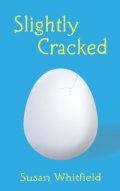 Susan: I’ve been writing the Logan Hunter Mysteries, publishing the first novel back in 2007. As much as I have loved Logan, I knew as an author I wanted to write other stories and perhaps other genres. When I wrote Slightly Cracked, women’s fiction, I knew I wanted to write more in that genre, so I ended the Logan Hunter Mysteries with Sticking Point, published in February of this year. I think I left Logan in a good place after putting her through some horrible ordeals in Genesis Beach, Just North of Luck, Hell Swamp, and especially Sin Creek. While I did enjoy the series, I also have a fondness for stand-alones like Slightly Cracked. I am currently trying my hand at historical fiction. More on that later.
Susan: I’ve been writing the Logan Hunter Mysteries, publishing the first novel back in 2007. As much as I have loved Logan, I knew as an author I wanted to write other stories and perhaps other genres. When I wrote Slightly Cracked, women’s fiction, I knew I wanted to write more in that genre, so I ended the Logan Hunter Mysteries with Sticking Point, published in February of this year. I think I left Logan in a good place after putting her through some horrible ordeals in Genesis Beach, Just North of Luck, Hell Swamp, and especially Sin Creek. While I did enjoy the series, I also have a fondness for stand-alones like Slightly Cracked. I am currently trying my hand at historical fiction. More on that later.
What’s the hook for the book?
Susan: Tying this into the last question, in Sticking Point, Logan investigates the death of a fifteen-year-old bully whose death was ruled natural causes.
Who’s the most unusual/most likeable character?
 Susan: In Sticking Point, Logan must work with another investigator whom she thinks she despises. They are uncomfortable and it shows, but as the investigations rolls along, they begin to understand and appreciate how the tragic past has affected each of them. My favorite character in this book is the bed and breakfast owner, a British lady with strict rules and secrets of her own, but the novel moves from a mystery into a love story that I’m quite proud to have written.
Susan: In Sticking Point, Logan must work with another investigator whom she thinks she despises. They are uncomfortable and it shows, but as the investigations rolls along, they begin to understand and appreciate how the tragic past has affected each of them. My favorite character in this book is the bed and breakfast owner, a British lady with strict rules and secrets of her own, but the novel moves from a mystery into a love story that I’m quite proud to have written.
Do you have specific techniques to help you maintain the course of the plot?
Susan: I hate outlines so I start without one and then at some point I reach a roadblock and build an outline to get me straightened out. As much as I hate them, I have to admit they’ve fixed a multitude of problems for me.
Do you have a specific writing style? Preferred POV?
Susan: I call my own writing “elementary” because I don’t use big words. It’s just easy everyday writing. I prefer first person but I wrote the women’s fiction in third person because it’s important for the reader to get into the heads of four characters.
How does your environment/upbringing color your writing?
Susan: I grew up in North Carolina and have lived here all my life. It makes sense to set the books here. While I don’t exaggerate my Southern background, I try to use local and regional dialects and showcase different areas of the state. Setting is almost always a feature in my books.
Share the best review (or a portion) that you’ve ever had.
Susan:
“Sin Creek by Susan Whitfield, is an eye-opener and a heart-breaker, but with the sweetest redeeming ending.
Having had a long-standing friendship with a detective, when reading Sin Creek, I felt a sense of déjà vu about events I know to be true. These foul crimes do exist and are proliferating all over the world, both promoted by and brought to law enforcement attention by the Internet. Whitfield portrays the underpinnings of one man’s vile world of pornography with researched accuracy.
Though this story is fiction, the very same types of exploitation continue to happen and escalate. If you never understood how lewd and dangerous the world of porn is, read Sin Creek. It’s fiction but true to life. It’ll make you shudder.”
What are your current projects?
Susan: I am currently writing an historical mystery, titled Sprig of Broom, about an ancestor who was a Knight of the Bath. This is by far the most challenging project I’ve ever done because I’m traveling back to medieval times. Research is on-going and I want to represent my ancestor as accurately as possible while filling in the gaps with fiction that seems to be true. It’s a slow process and I anticipate a lengthy amount of time before it’s complete.
Where can folks learn more about your books and events?
Susan: I blog at www.susanwhitfield.blogspot.com
My web site is www.susanwhitfieldonline.com
I’m also on Facebook and a member of Booktown at www.booktown.ning.
Thanks for joining us today, Susan.
Susan: Thank you for the interview.
 Writing a novel from one unique perspective can be challenging enough for many writers, but writing a character’s story through multiple perspectives will multiply the challenges, but also the rewards. Adi Alsaid’s new novel, Let’s Get Lost (Harlequin Teen, 2014), is an excellent example of using multiple perspectives to effectively tell the story of one character’s road trip while also keeping the reader enticed and invested for the entire ride. Here, Alsaid offers five quick tips for authors who hope to do the same in their stories.
Writing a novel from one unique perspective can be challenging enough for many writers, but writing a character’s story through multiple perspectives will multiply the challenges, but also the rewards. Adi Alsaid’s new novel, Let’s Get Lost (Harlequin Teen, 2014), is an excellent example of using multiple perspectives to effectively tell the story of one character’s road trip while also keeping the reader enticed and invested for the entire ride. Here, Alsaid offers five quick tips for authors who hope to do the same in their stories.
* * * * *
I’ve always been drawn to multiple perspectives, both as a reader and as a writer. And as a person! I like getting into people’s heads. That’s what I love about fiction, the ease with which we can slip into someone else’s thoughts. So when I write, I like telling a story from as many perspectives as the narrative will allow. With Let’s Get Lost, I thought it would be really interesting to tell a road-trip tale through the eyes of characters who are stationary, who are going through their own issues, their own lives, when a mysterious girl comes crashing in. Here are my tips for writing in multiple perspectives.
–
Adi Alsaid was born and raised in Mexico City. He attended college at the University of Nevada, Las Vegas. While in class, he mostly read fiction and continuously failed to fill out crossword puzzles, so it’s no surprise that after graduating he packed up his car and escaped to the California coastline to become a writer. He’s now back in his hometown, where he writes, coaches high school and elementary basketball, and has perfected the art of making every dish he eats or cooks as spicy as possible. In addition to Mexico, he has lived in Tel Aviv, Las Vegas and Monterey, California. A tingly feeling in his feet tells him that more places will eventually be added to the list. For more, visit www.somewhereoverthesun.com.
Add a Comment
Plotting is probably the hardest thing I do. I can explain to you 29 different plot templates. And I often write about plotting a novel. Theory, I know. And I know that I can plot a story pretty well. It’s just HARD.
The problem is that there are a series of inter-connected scenes which build to a climax. The structure of events, though, needs to progress from an introduction of a character goal, dramatizing problems and obstacles to getting that goal, and then, finally some resolution, either a happy or sad ending.
OK. I can slot events into a novel structure from a structural viewpoint. For example, at the mid-point of a story, the hero’s journey, the Snowflake method and other plot paradigms might ask you to provide a bleak moment for the main character. There should be a mini-death: the death of hope–the character will never reach your goal; the death of a feeling of safety, and so on.
Knowing that is easy. The exact type of mini-death that is best for the current WIP, and figuring out how to dramatize that event (Show, Don’t Tell), is hard.

Storytellers Statue on Buena Vista Street in Disney California Adventure Park. One of the most amazing American storytellers that ever lived.
What’s my answer to this straight-laced method of working? Storytelling.
Several articles recently reminded me that I am not just a writer, but a writer of stories. I am getting way to hung up on the theory and I am forgetting that i can just tell the story and have fun with it. Sure–I know that certain plot elements will make the story stronger, but those things are killing my joy in writing. So, I started telling my story.
Once upon a time, there were two water worlds. One world—Rison by name—was dying, the result of misguided scientists trying to act as God and control the natural forces of the planet. The inhabitants knew their time was limited and sought a refuge, a new home. The other water world—called Earth—caught the Risonian’s attention because the inhabitants only lived on land. Surely, they could share their water, the only place the creatures from the dying world would ask for.
Ah, but therein lies the problem. Sharing.How do creatures put aside their own fears and self-interest and share? And, how can creatures do so willingly? When would the long-term benefits outweigh the short-term problems.
This could cause a war: if you don’t give us room on your planet, maybe we’ll just take over your planet.
The voice isn’t right. There’s not an opening scene. But right now, none of that matters because I don’t know the story. The first draft is to tell you the story; every draft after that is the question of how to craft the story in the most dramatic and compelling way for your readers. Right now, I’m just trying to tell a story. Crafting that into a novel will come later. Come. Listen to my story. . .
A side note: Did you know that if you have an iPhone, you can ask Siri to tell you a bedtime story. She’s told me so many bedtime stories, that she refuses to do it again–unless I beg.
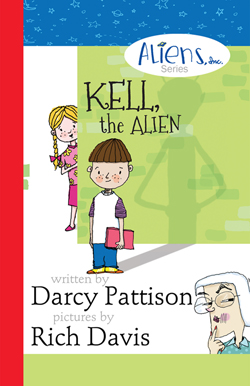 |
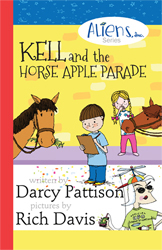 |
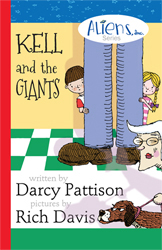 |
I am writing a science-fiction trilogy and I’d like it to have general appeal to kids and teens. So, recently, I went to see the new Transformers 4: Age of Extinction to see what I could learn. Here’s one of the official movie trailers.
If you can’t see this video, click here.
SPOILER ALERT: I analyze the plot of this movie, so if you haven’t seen the movie and don’t want to know what happens, stop reading!
Who? Yeager family POV
When? Five years after Chicago was destroyed in the Transformer battles.
Promise kept: Tessa has lived to attend her high school graduation, and has a new-found respect for her Dad’s tinkering ways.
There are several main subplots and you could analyze the story from one of the other ones. Here, I’ve concentrated on Cade/Tessa as the main plot. If you want to argue that this is Optimus Prime’s story, I could go for that; however, I think readers/movie fans are more likely to identify with the human characters.
In any case, my point is to learn something.
Looking at this plot analysis, I realize immediately that I’m not putting enough at stake early enough in the story. My Plot Point I involves the character making a decision. It’s not an action scene where the antagonists arrive to threaten a girl and to recapture a rogue transformer.
Of course–different stories have different needs. I describe quiet stories as having a pastel palette and there is indeed a place for stories like this. Transformer’s palette, however, is bold.
My question to answer: What sort of physical action/adventure palette do I want? Is my story a quiet story, or does it fall farther along the spectrum toward an action/adventure story?
The dreaded sagging middle is always a problem for me. In Transformers, the whole of Act 2 is about Rescue: rescue Brains from the KSI; rescue Optimus Prime and Tessa from Lockdown’s space ship. Notice that the Midpoint twists the story in a tangent direction when Tessa is captured and taken to the alien space ship. Of course, we are worried about Optimus Prime! But he’s a strong and able transformer who is likely to fight his way free at some point. Tessa, however, is a high school senior and it’s not fair that she is caught up in this conflict. It’s a nice way to keep the action going, to up the stakes and to play on the audience’s emotions.
My Act 2 hangs together well, and has a nice Midpoint twist. The same question lingers, though. Do I need/want more action/adventure?
We transition into Act 3 with a revelation in Plot Point 3 that Galvatron = Megatron. With such an evil abroad, no one can relax. They MUST take the battle to him. And what a battle! Aliens v. aliens. Over Hong Kong! Dinobots, or a great combination of t-Rex with transformers! What’s not to like? We get lots of exclamation points!!!!
This is indeed a movie built on action sequences and it’s almost non-stop in Act 3.
No, I don’t want my story to be THAT action/adventure oriented. I’ll back off the Transformer’s palette a couple steps.
However, there are a couple nice moments. In the Hero’s Journey, there is often a death scene, followed by a resurrection scene. It’s the death of the hopes of the protagonist, and a renewal of the hope. Optimus Prime is impaled and we think he is dying. One of the story’s themes is that humans have potential. It’s crucial here that Cade, Tessa and Shane work as a team to help Optimus: they remove the “spear,” and help him to defeat the evil Lockdown.
My Act 3 has action, a chase, and some nice possibilities for physical action. As I write it, I must remember to include scenes that highlight the theme in an organic way. If I can find a reasonable Death/Resurrection moment, so much the better.
Studying popular movies like this can be one way to reevaluate your plot. I’m still early in the plotting process, so this is a perfect time to do this. It doesn’t solve my problems: but it forces me to ask the right questions. And at this stage, that’s what I need: questions that force me to think deeper about my story, the characters, and the plot.
 |
 |
 |
Here’s a common problem that I see in first drafts: the main action has happened off-stage.
Think about Scarlett O’Hara and the other southern women sitting at home waiting; in an attempt to avenge his wife, Frank and the Ku Klux Klan raid the shanty town whereupon Frank is shot dead. But the raid takes place off-stage.
Or, think about times when a weaker character stays home, while the adventurous character is off doing something. Sports stories are hard when the POV character is watching the on-field action.
This can be a real trap for children’s novels if an older sibling or parent is doing something fun/exciting/scary/etc off stage.
Another challenging situation is when a bully is planning something and the POV victim is just trying to avoid that.
Or, maybe you’ve planned a great scene, and the main character is present, but you don’t write that scene. Instead, what you write is something like this: “The next morning, Elise lay in bed and went over the previous night in her head.”
No. That doesn’t work!
Does this always need to be changed? No. But it’s a major problem and challenge as you revise. Here are some tips.
Recognize the problem. As you write the first draft and revise it, you should be evaluating the scenes. Ask: Who hurts the most in this scene. It should almost always be the main character. If it’s someone else, why isn’t THAT character the hero/ine of the story?
Put the POV Character in the action. When you find a scene where the main action is off-stage, look for ways to rethink the plot and scenes and put the main character in the thick of the action. It’s why Captain Kirk leaves the Enterprise and goes down to the planet over and over and over. Really? No Captain would be allowed to jeopardize his life that much and give over the control of the ship to a junior officer. It’s unrealistic–but great storytelling.
Make the story about how the off-stage action affects the POV character. In Gone with the Wind, Frank and the other men go off to avenge Scarlett’s honor, but the POV stays firmly with Scarlett. It’s about her growing realization of what the men have gone off to do, the opinion of the other women, and eventually the women’s reactions when the men come back. This is a risky way to write a scene, because the real stuff happens off stage; but it can work if you keep the focus right.
Write the scene. If your character is just thinking about what happened last night, it’s a simple fix. Write the @#$@#$@# scene! Sometime this happens when the author is afraid of the emotions in a powerful scene; the author avoids writing that scene and tries to jump forward in time. It never works. You must write the scene that you fear. you must write the exciting scene because your reader demands it; that is the exact reason why they come to your story. Don’t cheat them out of the emotionally experience.

Guest Post by
Claudia Finseth
I recently took Darcy’s Whole Novel Workshop and read her book, Novel Metamorphosis: Uncommon Ways to Revise. Between the two, there was a great deal of valuable new information to process. I’m very visual, so one way I worked through and organized the information was by creating charts. To what are mostly Darcy’s ideas, I added a few of my own, and some I’ve learned in other workshops. Darcy has asked me to share these charts here on her blog.
The first chart is The Novel Revision Chart. As Darcy teaches, there are many types of revision to consider once we have a draft of a novel.
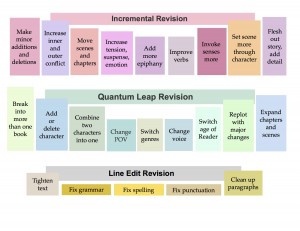
This Novel Revision Chart show the different types of revisions and helps you prioritize the revision tasks. CLICK TO VIEW FULL SIZE.
The Darcy Pattison Novel Revision Retreat will come to the Boston area in August, 2014. There are a limited number of spaces still available. See Anne Broyles site for details. Also available is a Build Your Website session and a Picture Book Workshop. Hurry! Spaces limited! And time is short!
Then, I identified where these types of revision landed on the Novel Revision Chart. If they landed somewhere on the Incremental Revision line, I figured I could work with what I had already written. The three types of revision mentioned in the previous paragraph all land there. If, however, the needed revisions landed on the Quantum Leap Revision line, then I figured maybe I should scrap this chapter or that and write it again from scratch. Or write the whole novel again in a new draft. Or take the novel apart and reorganize it in some major way. For instance, my second novel is probably really three novels. (Sigh.) But better I realize that now than waste time trying to fix it the way it is.
The point is, this chart can help writers identify how major or minor the next revision needs to be, as well as what kind of revision needs to be focused on next. It can save us spinning our wheels on the wrong kind of revision. How many times have we worked on verbs or sensory detail when what we needed was to introduce another character or change the beginning? Trust me: been there, done that, and it’s very annoying to realize I should have been working on a totally different kind of revision. The chart can make us smarter revisers.
The Line Edit Revision part of the chart is a reminder that the final revisions you do, once the novel is firmly shaped and sparkling with life, and just before submission, need to be these five types of micro-edits. Therefore, it is at the bottom of the chart.
But before we do any line editing, there’s the second chart to look at, A Checklist for Each Scene. As the first chart is a way of evaluating the revision needed overall, this second chart is for scene by scene revisions. As Darcy explains in Novel Metamorphosis: Uncommon Ways to Revise, each scene is a kind of whole of its own. Taking one scene at a time, a writer can use this chart in conjunction with Darcy’s book to make sure each scene includes all the elements required to create a tight, compelling scene that propels the reader into the next one.
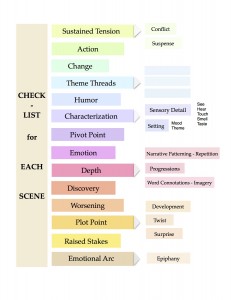
After the major revisions and before the minor Line Edit revisions, you should do a scene check. CLICK TO SEE FULL SIZE.
I have these charts before me as I work. They are quick reminders of each step needed to flesh out and deepen a scene and ultimately write a novel that editors will want to publish because they are so rich and satisfying a read. I’ll make checks on the charts as I go, when I think I’ve accomplished each type of revision. And when I’m “done” I’ll put a big exclamation mark in sharpie marker, or a smiley face, or perhaps I’ll save them for the next novel.
 Claudia Finseth is a writer and author living in Tacoma, Washington. She is published in non- fiction adult, poetry and short children’s stories in Cricket Magazine. Her goal now is to become an adept at the novel form. “Novels are hard!” she says. Her website is claudia.finseth.ca.
Claudia Finseth is a writer and author living in Tacoma, Washington. She is published in non- fiction adult, poetry and short children’s stories in Cricket Magazine. Her goal now is to become an adept at the novel form. “Novels are hard!” she says. Her website is claudia.finseth.ca.
Today, I stare failure in the face.
Today, I am scared.
Today, I see possibilities as the possibility of failing.
In other words, I have finished all my self-imposed deadlines on other projects and cleared my plate of other tasks, so that I can start a new novel. And it terrifies me.
It’s an ambitious project, something I expect to turn into a trilogy. I have such hopes for this project: hopes that it will reach new readers; hopes that it will be fun to write and promote; hopes that it will be (I’m afraid to even say it!) a breakout novel for me.
And I am scared.
I’ve done my homework. Volcanoes feature large in this story, so last month while I was in the Pacific Northwest, I visited Mt. St. Helens.
I’ve written samples for this story from different points of view, and even sold a short story based on the back story.
And yet–I am scared to sit down and start this. Yes, I’ve written the book on starting a novel and I’m still scared to start again. As ART AND FEAR puts it, I am scared that my fate is in my own hands–and that my hands are weak.
I SHOULD see the great possibilities of success.
I SHOULD approach this with excitement.
I SHOULD be so ramped up by now that the words would flow, as if bestowed from above, with angelic music swelling and…
No. Writing is work. It’s the hardest work I’ve ever done or ever hope to do. But it’s also the most exciting, most fun, and most rewarding work I will ever do.
So, at 8:30 this morning, I’ll turn on my Freedom app, giving myself three hours of uninterrupted time. I will make a start. A messy start. But a start. And that will be enough for today. Just make a start, that’s my goal for today.